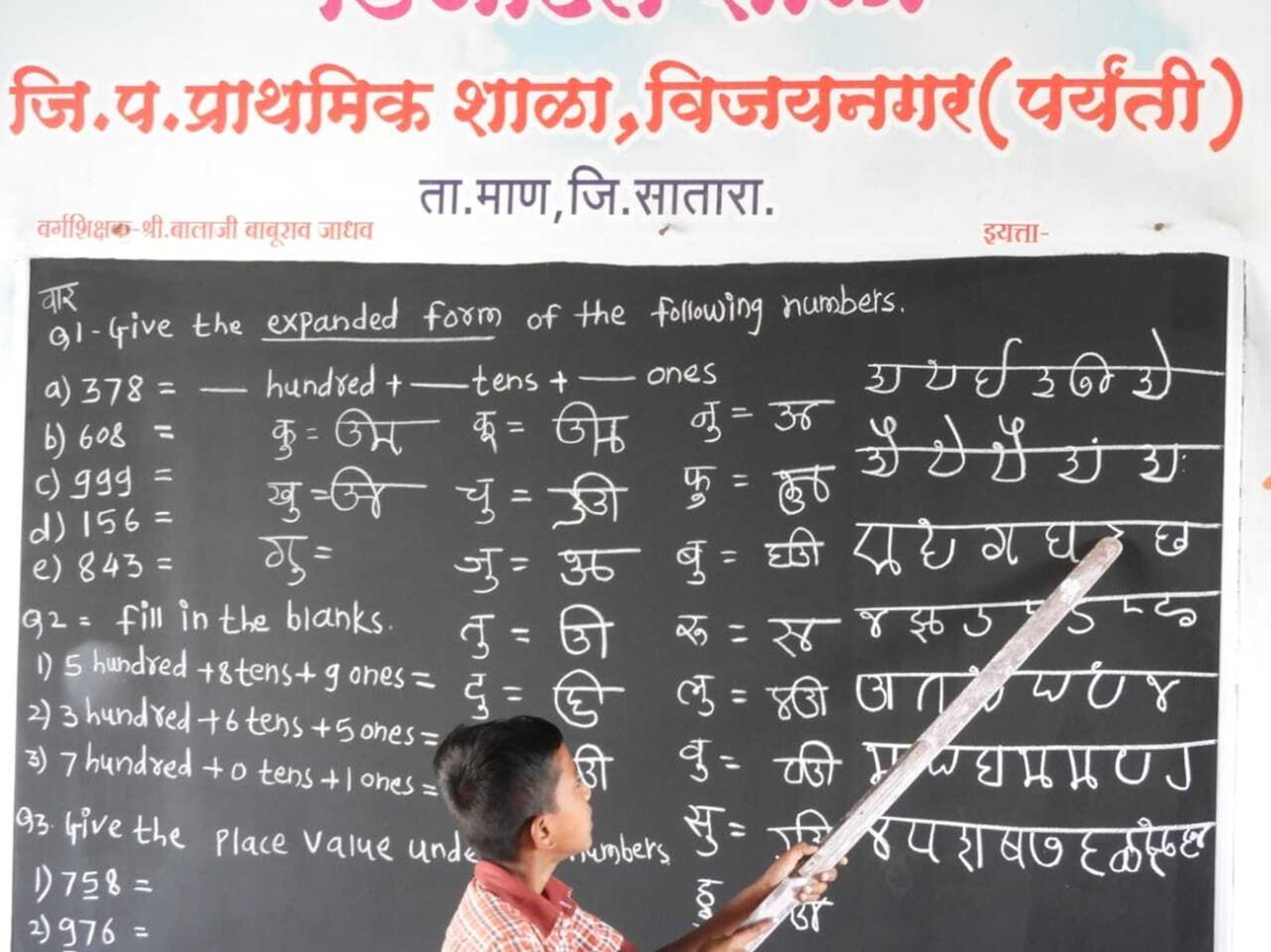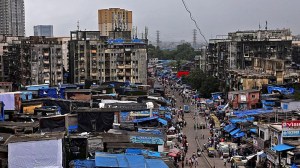School in Maharashtra village seeks to revive ancient ‘Modi’ script, three-four letters at a time
Found in historic government documents and manuscripts in Marathi, the name of the ancient script is directly derived from the Marathi verb modane, which means “to bend or to break”.
 With the passage of time, the script was replaced with the more popular Balbodh version of Devanagari script, which is currently used to write Marathi.
With the passage of time, the script was replaced with the more popular Balbodh version of Devanagari script, which is currently used to write Marathi. With the aim of reviving the ancient ‘Modi’ script of Marathi, Satara’s Vijay Nagar Primary Zilla Parishad school in Man taluka has started a unique initiative of teaching it along with the more commonly used Marathi script.
Found in historic government documents and manuscripts in Marathi, the name of the ancient script is directly derived from the Marathi verb modane, which means “to bend or to break”. The script involves the bending of letters for convenience in shorthand writing. The cursive-fast-writing variant had been in use until the 1950s.
However, with the passage of time, the script was replaced with the more popular Balbodh version of Devanagari script, which is currently used to write Marathi. The current script is said to be more convenient for printing than the Modi script.
Principal of the Satara school, Balaji Jadhav, who started the initiative in October 2023 along with teacher Sheshaba Narale, said, “While reading about Maratha reservation in the news, I learnt that several historic documents in Marathi are in Modi script and that there are not many individuals who can read those.”
 The school in Satara’s Vijay Nagar village, located in drought-prone Man taluka, has been lauded for starting various out-of-the-box extra-curricular activities in the past, too.
The school in Satara’s Vijay Nagar village, located in drought-prone Man taluka, has been lauded for starting various out-of-the-box extra-curricular activities in the past, too.
As he began to research more, Jadhav learnt that Modi script was part of the school education system, too, until the 1960s, but was completely replaced by the Balbodh Devanagari. As he began learning the script himself through video tutorials available online, Jadhav decided to introduce it to schoolchildren.
“After all, they are the next generation. This will not only introduce them to basic reading and writing skills of Modi script, but will also create a strong base for those who might have to read this script in future as students or researchers of history,” he said.
Jadhav began by counselling parents to obtain their consent to introduce Modi script to children in school. Once that was done, he began teaching – starting with only three to four letters a day. After students could write 10 letters, the lessons would include making simple words from those letters.
“Children were learning to read simultaneously. Within a month, we completed learning all alphabets,” said Jadhav, adding that the struggle began at the time of writing compound words.
Now, 35 children from Class 2 to 4 are able to read and write simple words and sentences in the Modi script.
“We had learnt Marathi letters earlier, but now we are learning a new way of writing those letters. Our teachers have told us that many documents from history are written in this script,” said Smit Jadhav, a Class 4 student.
The school in Satara’s Vijay Nagar village, located in drought-prone Man taluka, has been lauded for starting various out-of-the-box extra-curricular activities in the past, too. A year ago, children from this school had started taking lessons in Japanese language. Children are now appearing for the Japanese Language Proficiency Test with help from Japanese Language Teachers’ Association, Pune.







